In 2009 writer and filmmaker Arnold van Bruggen and photographer Rob Hornstra embarked on the Sochi Project, a five year enterprise to map out the area of and around Sochi (Krasnodar Krai, Russia), a small city on the Black Sea that will host the 2014 Winter Olympics. The duo will document the changes the city undergoes while it is getting ready for the Olympics.
The choice of this location is surprising, to say the least. This subtropical coastal area has exceptionally mild winters by Russian standards (average 11 °C (52 °F) during the day and 4 °C (39 °F) at night in the period from December to March). Besides, it lacks any kind of facilities and infrastructure to host the event.
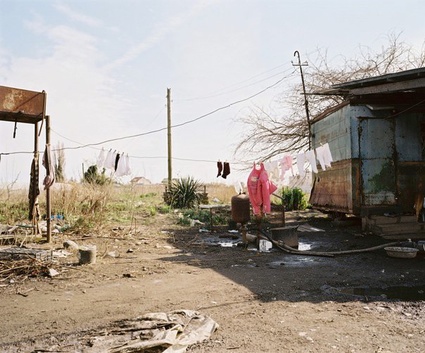 Abkhazian refugees living on the fields where the skating stadions will be built. Image credit: Rob Hornstra
Abkhazian refugees living on the fields where the skating stadions will be built. Image credit: Rob Hornstra
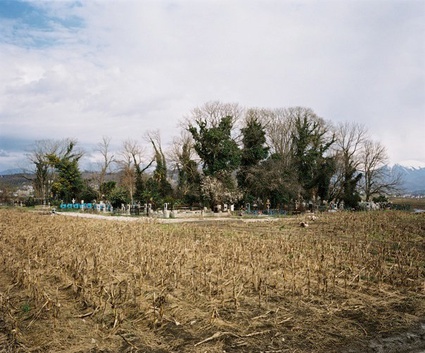 Old cemetery around which the skating facilities will be built. Photo credit: Rob Hornstra
Old cemetery around which the skating facilities will be built. Photo credit: Rob Hornstra
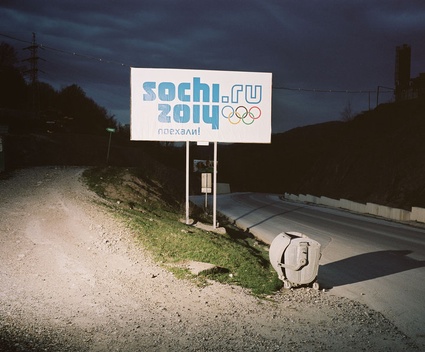 Photo credit: Rob Hornstra
Photo credit: Rob Hornstra
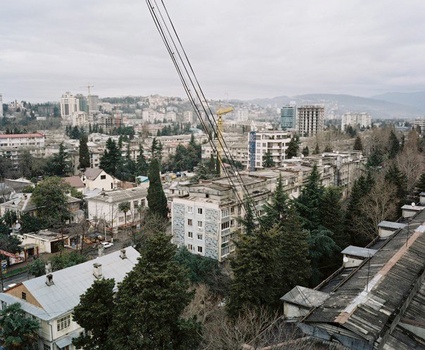 Sochi Centre. Photo credit: Rob Hornstra
Sochi Centre. Photo credit: Rob Hornstra
The choice is not just surprising it is also extremely controversial. Greenpeace Russia is particularly worried about the environmental impact of the construction work inside a national park. To top it all, the Games are going to take place in Russia’s most unstable region. A few hundred kilometres away are the breakaway republics Chechnya, Ingushetia and Dagestan. And just a few kilometres away is Abkhazia.
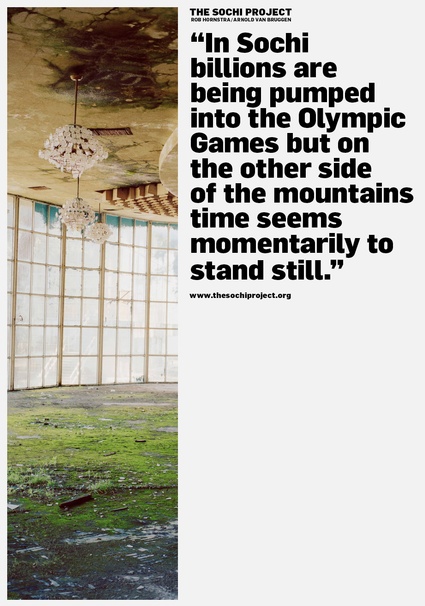 Image, copyright Rob Hornstra, The Sochi Project, designed in association with Kummer & Herrman
Image, copyright Rob Hornstra, The Sochi Project, designed in association with Kummer & Herrman
An exhibition titled Mutations III, currently on view at the Berlinische Galerie, shows one of the first chapters of The Sochi Project And in particular a newspaper-cum-exhibition presenting life in Krasny Vostok. The village is barely 200 kilometres away from Sochi, but it appears to still have one foot in the 19th century, still partially without gas and electricity.
A village like so many in Russia. Where the population is dwindling; where industry and activity are disappearing; where a handful of people are attempting to prevent the decline; where Moscow’s politics trickle through slowly; where every day is a struggle to keep the village hanging on. Only when you are familiar with this kind of village, we believe, can you get to know this region better.
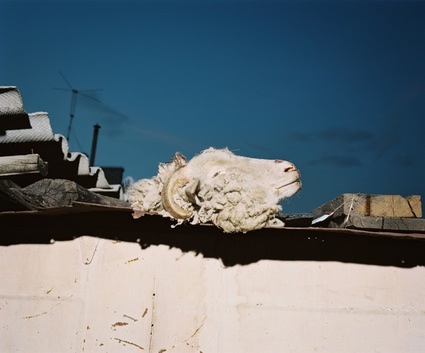 Krasny Vostok, RUSSIA, 2010 – ‘In the past every part of the animal was used,’ says Aibasov, the occasional butcher. ‘We don’t do that any more.’ Image credit: Rob Hornstra
Krasny Vostok, RUSSIA, 2010 – ‘In the past every part of the animal was used,’ says Aibasov, the occasional butcher. ‘We don’t do that any more.’ Image credit: Rob Hornstra
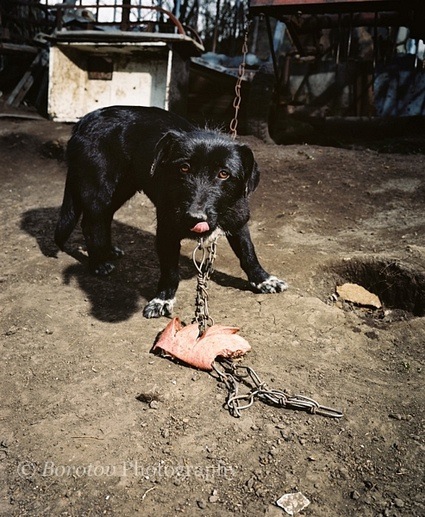 Krasny Vostok, RUSSIA, 2010 – The dog is thrown the entrails of a slaughtered sheep. Image credit: Rob Hornstra
Krasny Vostok, RUSSIA, 2010 – The dog is thrown the entrails of a slaughtered sheep. Image credit: Rob Hornstra
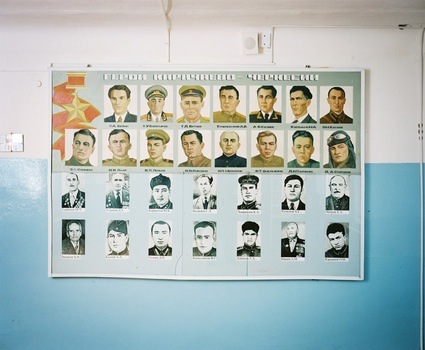 Krasny Vostok, RUSSIA, 2009 – Everything in the school still looks neat and tidy, as if you have travelled back in time to the Soviet Union. The village’s war history is displayed in the corridors on the second floor. The walls of the German classroom are lavishly painted. Image credit: Rob Hornstra
Krasny Vostok, RUSSIA, 2009 – Everything in the school still looks neat and tidy, as if you have travelled back in time to the Soviet Union. The village’s war history is displayed in the corridors on the second floor. The walls of the German classroom are lavishly painted. Image credit: Rob Hornstra
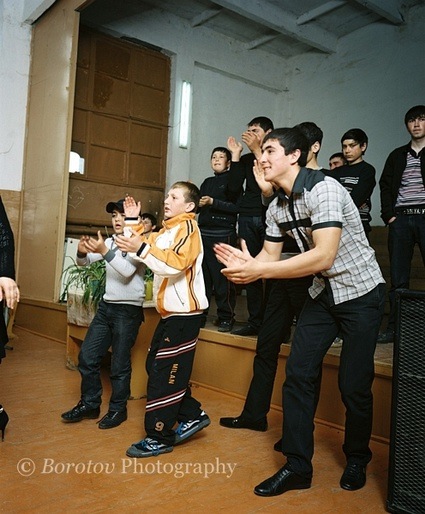 Krasny Vostok, RUSSIA, 2010 – Sometimes the children are allowed to organise a disco. The oldest then stand on the stage, and the boldest ask the prettiest girls to dance. What follows is an exhausting whirlwind in which the two spin around each other but never touch. The man swaggers, the woman seduces. Image credit: Rob Hornstra
Krasny Vostok, RUSSIA, 2010 – Sometimes the children are allowed to organise a disco. The oldest then stand on the stage, and the boldest ask the prettiest girls to dance. What follows is an exhausting whirlwind in which the two spin around each other but never touch. The man swaggers, the woman seduces. Image credit: Rob Hornstra
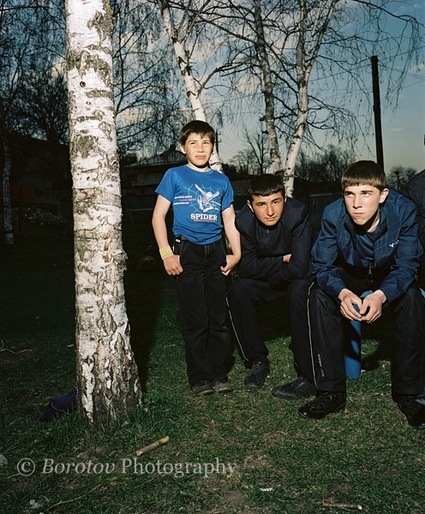 Krasny Vostok, RUSSIA, 2010 – In the evening, the older boys drive around together or wash their Zhigulis in the river. The ones who do not yet have a car hang around in the town hall’s playground. Girls generally all stay inside. Image credit: Rob Hornstra
Krasny Vostok, RUSSIA, 2010 – In the evening, the older boys drive around together or wash their Zhigulis in the river. The ones who do not yet have a car hang around in the town hall’s playground. Girls generally all stay inside. Image credit: Rob Hornstra
The series about Krasny Vostok is called On the Other Side of the Mountain, you can view more photos online.
Because Hornsta and van Bruggen believe that the Games themselves, and all the area surrounding Sochi deserve a sustained and in-depth coverage, the pair request donations from the public for the crowdfunding of a project whose scale is impossible for the mass media. They call it slow journalism. Please support their project by donating.
Photo on the homepage: Matsesta, RUSSIA, 2009 – Dima has burns on his legs. He is being treated with sulfide-chloride-sodium water in the healing complex of the Matsesta spa. Image credit: Rob Hornstra
